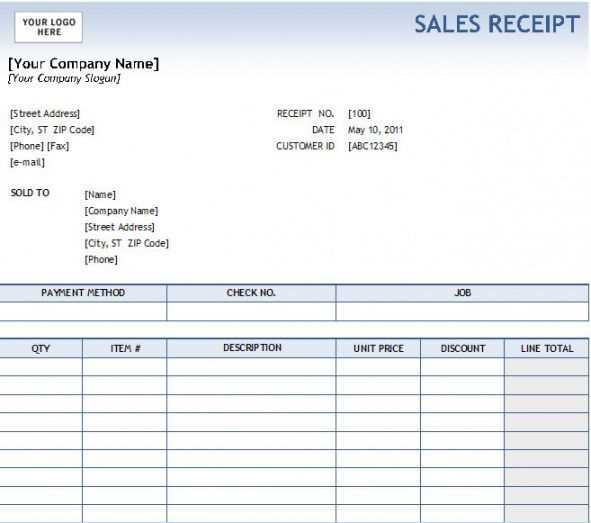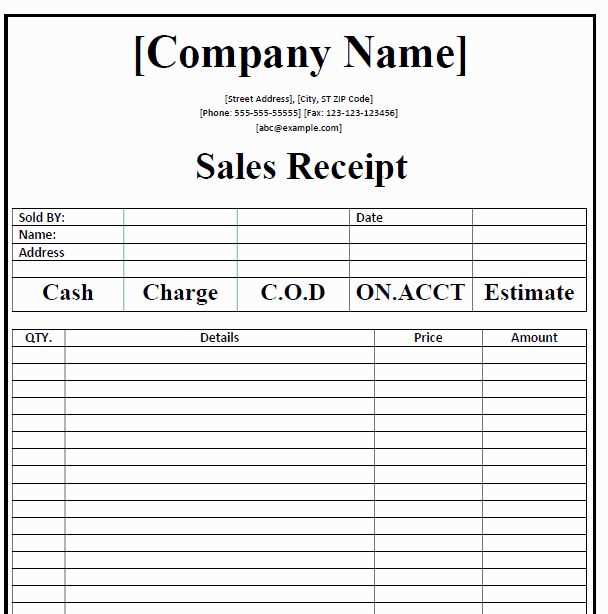
A private vehicle sales receipt should include key details to ensure both parties are protected. Start with the full names, addresses, and contact information of both the buyer and the seller. Clearly state the make, model, year, VIN (Vehicle Identification Number), and mileage of the vehicle. This helps avoid confusion in the future regarding the specific vehicle being sold.
Price and Payment Details: Include the exact sale price and any terms related to the payment method, such as whether it’s a full payment or installment plan. If the transaction includes a down payment, list it separately. Be transparent about any additional fees that may apply.
Vehicle Condition: Describe the current condition of the vehicle. This includes any known defects, damages, or repairs done recently. Both buyer and seller should agree on the vehicle’s state to avoid disputes later.
Signature and Date: Finally, both parties must sign the document and include the date of the sale. This confirms the transfer of ownership and solidifies the agreement. Make sure to provide copies for both parties for their records.
Here are the corrected lines:
Vehicle Description: Include the make, model, year, and VIN (Vehicle Identification Number) to ensure proper identification of the vehicle being sold. Avoid vague terms or incomplete details.
Seller’s Information: The full name, address, and contact details of the seller should be clearly stated. This ensures the buyer can reach out if there are any follow-up questions or concerns after the sale.
Buyer’s Information: Similarly, include the full name, address, and contact details of the buyer. This is important for record-keeping and future reference.
Sale Price: Clearly state the agreed sale price in both numbers and words. This avoids any ambiguity about the transaction value.
Payment Method: Specify how the payment will be made (e.g., cash, bank transfer, check). This provides clarity on the method of transaction and helps prevent disputes.
Warranty Information: If the vehicle is sold with a warranty, clearly outline the terms, including coverage, duration, and any exclusions. If sold as-is, note that explicitly.
Signatures: Both the buyer and seller should sign the document to acknowledge that all details are correct. This makes the receipt legally binding.
- Private Vehicle Sales Receipt Template
When drafting a private vehicle sales receipt, ensure it contains the following critical elements for clarity and legal protection:
1. Seller and Buyer Information
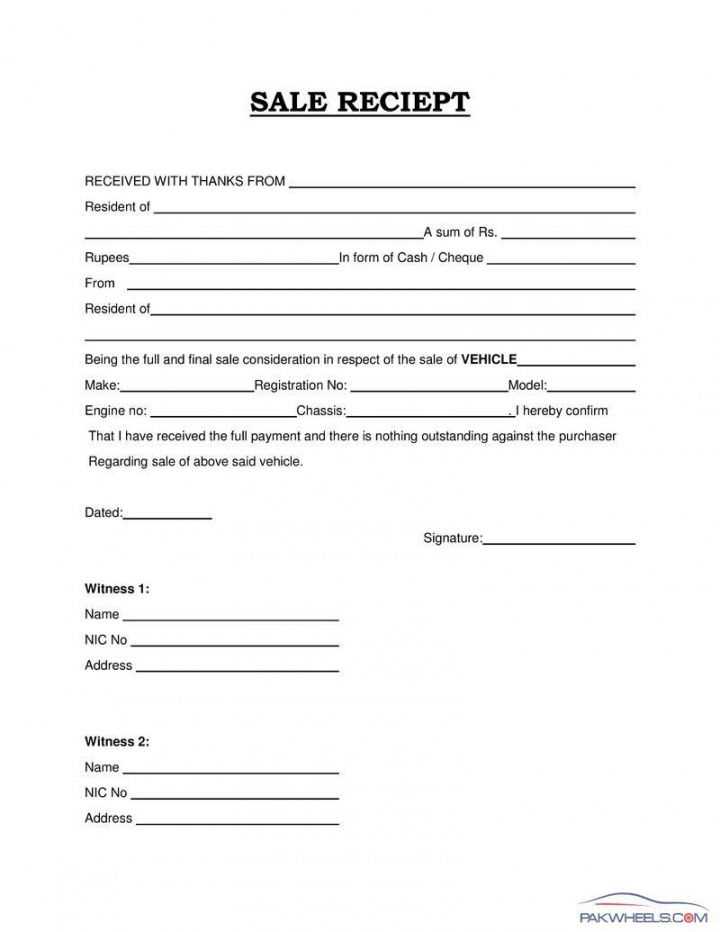
Include the full names, addresses, and contact details of both the seller and the buyer. This establishes the parties involved in the transaction.
2. Vehicle Details
Record the vehicle’s make, model, year, color, Vehicle Identification Number (VIN), and odometer reading at the time of sale. This ensures both parties have clear information about the specific vehicle involved.
3. Transaction Details
Clearly state the sale price agreed upon, along with the payment method used (e.g., cash, check, or bank transfer). Specify if any deposits were made before the final sale. This helps avoid confusion about the financial terms of the transaction.
4. Date of Sale
Include the exact date the sale took place. This timestamp can be crucial for future reference, such as for registration or any disputes.
5. “As-Is” Clause
Specify that the vehicle is sold “as-is,” meaning there are no warranties or guarantees from the seller about the condition of the vehicle. This is important to avoid any future claims about defects.
6. Signatures
Both the buyer and seller should sign the receipt to confirm the sale has been completed. This legally binds both parties to the terms outlined in the document.
Begin by including the full names and addresses of both the buyer and the seller at the top of the receipt. Make sure to list the correct date of the transaction to ensure clarity. The vehicle’s details should follow, such as make, model, year, Vehicle Identification Number (VIN), and odometer reading at the time of sale.
- Seller and Buyer Information: Full name, address, and contact details for both parties.
- Transaction Date: Include the exact date the sale takes place.
- Vehicle Description: Provide specific details like make, model, year, VIN, and odometer reading.
Include the sale price of the vehicle clearly, and specify if taxes or fees are involved. Indicate whether any items or accessories, like extra keys or manuals, are included in the sale.
- Sale Price: List the agreed upon price for the vehicle.
- Additional Fees: If applicable, list any additional charges such as taxes, registration fees, or extra items.
- Items Included: Mention any accessories or documents transferred with the vehicle.
Ensure that both parties sign the receipt. This finalizes the agreement and confirms that both buyer and seller acknowledge the terms outlined in the document.
- Signatures: Both parties must sign the document to validate the sale.
Begin with the full names and contact information of both the buyer and seller. This includes addresses, phone numbers, and email addresses, ensuring both parties are clearly identified. Next, specify the make, model, year, and Vehicle Identification Number (VIN) of the vehicle. This information verifies the vehicle’s identity and avoids future disputes over the car’s details.
Include the purchase price in both numerical and written form. This prevents any confusion about the agreed amount. Also, mention the date of the sale, as it establishes the exact time the transaction took place.
If applicable, note any trade-in vehicles involved in the sale, along with their details and agreed value. Be sure to document whether any down payments, deposits, or financing arrangements have been made. If there are warranties or guarantees associated with the vehicle, include the terms clearly to protect both parties.
Lastly, both the buyer and seller should sign the receipt to confirm the accuracy of the information and the completion of the transaction. This will prevent future disputes or claims regarding the sale.
Ensure your sales receipt includes clear identification of both parties, including full names and addresses. This is crucial for confirming the transaction’s authenticity and ownership transfer.
Specify the vehicle’s details–make, model, year, VIN, and mileage. These details establish the exact vehicle involved and avoid potential disputes over the transaction.
Include the agreed sales price in the document. This confirms the amount both parties agreed upon and prevents misunderstandings regarding payment expectations.
State the condition of the vehicle. Clearly note if it’s sold “as is” or with any warranties. This protects you from claims about the vehicle’s condition after the sale.
Both parties must sign the receipt to make it legally binding. The signatures validate the agreement and confirm that both parties understand the terms of the sale.
Include a date of sale. This helps establish the timeline for ownership transfer and may be required by local authorities for registration purposes.
Ensure the receipt includes the correct buyer’s and seller’s details. Mistakes in names, addresses, or contact information can lead to confusion. Double-check spelling and ensure accuracy, especially with email addresses or phone numbers.
Do not skip the date of the transaction. Failing to specify the date can cause problems later, especially in case of disputes or when tracking the sale. Always note the exact date the transaction occurred.
Clearly describe the item being sold, including its make, model, year, and condition. Vague descriptions can lead to misunderstandings. Providing specifics helps both parties understand exactly what was sold.
Record the total amount paid, including taxes and additional fees. Avoid rounding numbers or omitting smaller charges, as this can create discrepancies. A detailed breakdown ensures transparency and clarity.
Don’t forget to include both the payment method and any relevant transaction IDs. Whether it’s cash, check, or bank transfer, these details are important for both the buyer and seller to reference later.
Lastly, always sign the receipt. Both parties should have a signed copy to confirm the legitimacy of the transaction. Without signatures, the document may lack legal standing in case of issues.
Clearly outline the details of the transaction in the sales receipt to prevent future disputes. The document should include the full names and addresses of both parties, the vehicle’s identification number (VIN), make, model, year, and mileage at the time of sale. Specify the agreed-upon sale price, payment method, and any warranties or “as-is” conditions. Both parties should sign and date the document to validate the transaction.
Key Elements of a Sales Receipt
- Vehicle Information: Ensure all vehicle details are correct to avoid confusion about the item being sold.
- Buyer and Seller Information: Include full legal names, addresses, and contact information for both parties.
- Payment Terms: Specify the amount, method of payment (e.g., cash, check), and any deposits received.
- As-Is Statement: If the vehicle is sold without warranty, clearly state that no further claims can be made once the transaction is complete.
- Signatures: Both the buyer and seller must sign and date the document to verify the authenticity of the transaction.
Additional Protection Tips
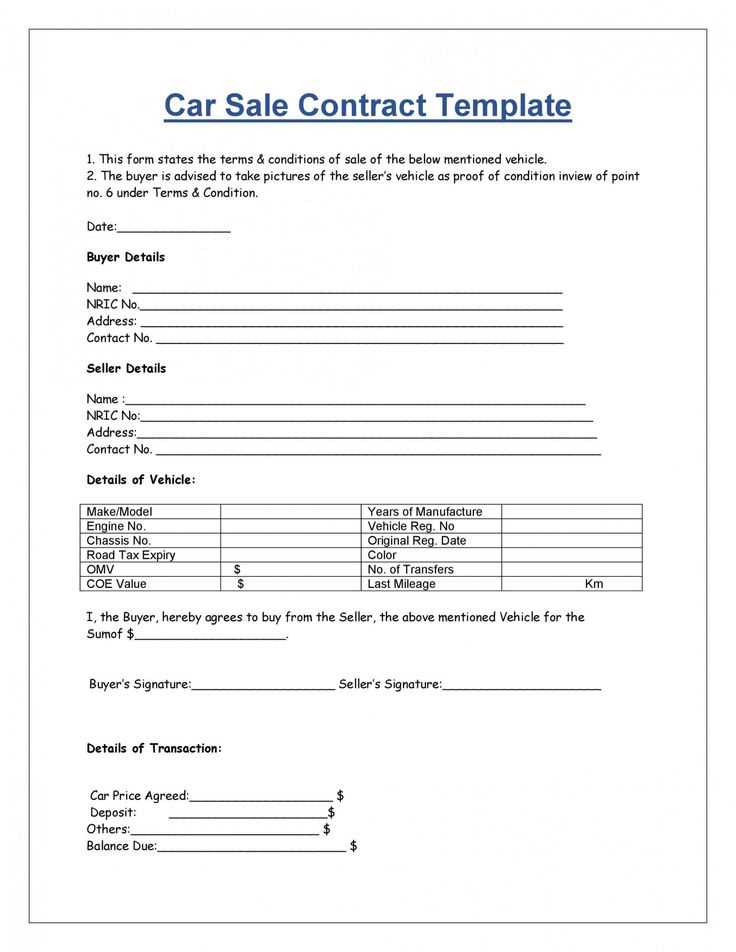
- Witness: Have a neutral third party present during the signing of the receipt to serve as a witness, further protecting both parties.
- Photographs: Take photos of the vehicle and its condition before the sale to avoid any future disagreements over damages or discrepancies.
- Make Copies: Both the buyer and seller should keep a copy of the signed receipt for their records.
To create a sales receipt tailored to vehicle transactions, begin by incorporating the key elements that are necessary for both buyer and seller. This includes the vehicle details, buyer and seller information, transaction date, and payment terms. Ensure the receipt has space to input the vehicle’s make, model, year, VIN (Vehicle Identification Number), and mileage. Clearly state the sale price and any taxes, along with the payment method used (cash, check, or bank transfer).
Detailing the Vehicle Information
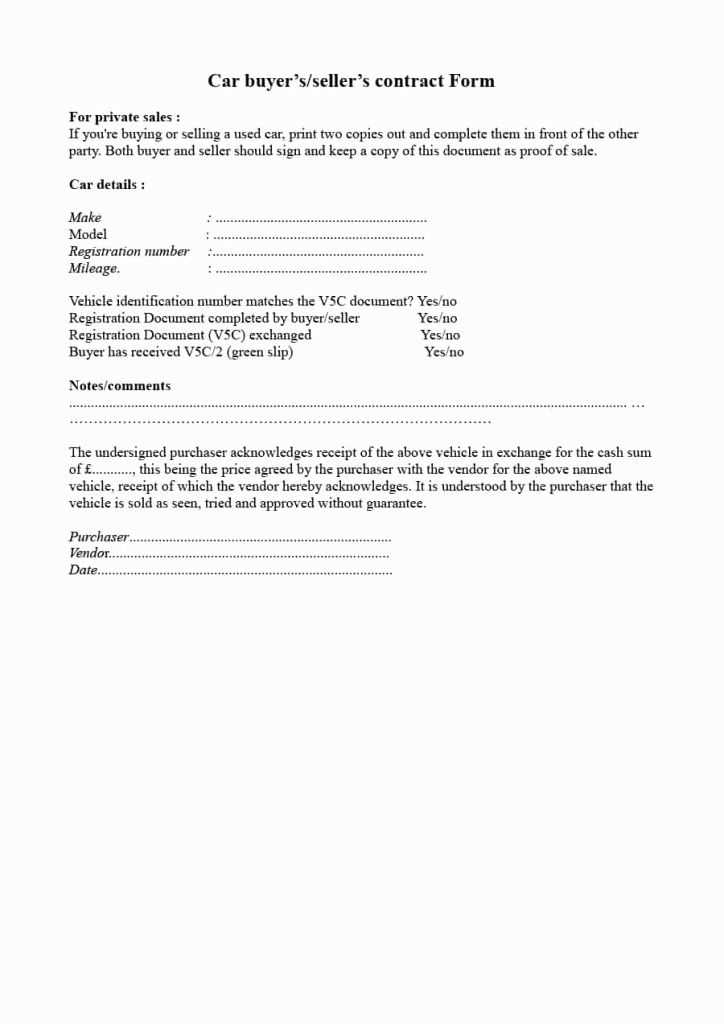
When customizing the template, dedicate a section to listing the vehicle’s specifics. This helps both parties verify the item being sold. Include fields for vehicle registration details, including the vehicle’s title number, license plate number, and any existing warranties or service contracts.
Including Buyer and Seller Information
Clearly distinguish between the buyer’s and seller’s details. Include full names, addresses, and contact numbers to avoid confusion in case of future correspondence. Add a section for the signature of both parties, signifying mutual agreement and acknowledgment of the terms.
Lastly, include a space for additional notes or clauses, such as disclaimers regarding the vehicle’s condition or any agreed-upon warranties. This section should provide flexibility to accommodate specific transaction conditions.
Begin with clear identification of both buyer and seller in the receipt. List full names, addresses, and contact details. This ensures that both parties can be easily reached if any future issues arise.
Detailed Vehicle Information
Provide the make, model, year, color, VIN (Vehicle Identification Number), and mileage of the vehicle. This eliminates any confusion about the vehicle being sold.
Payment Details
Specify the total agreed price, payment method, and any deposits or installment arrangements. If the transaction involves a trade-in, include that as well to avoid misunderstandings.
| Buyer Name | Seller Name |
|---|---|
| John Doe | Jane Smith |
| Vehicle Make | VIN |
| Honda Civic | 1HGBH41JXMN109186 |
| Price | Payment Method |
| $8,000 | Bank Transfer |
Include a section for signatures of both parties along with the date of the transaction. This adds an official touch to the document, confirming mutual agreement.

